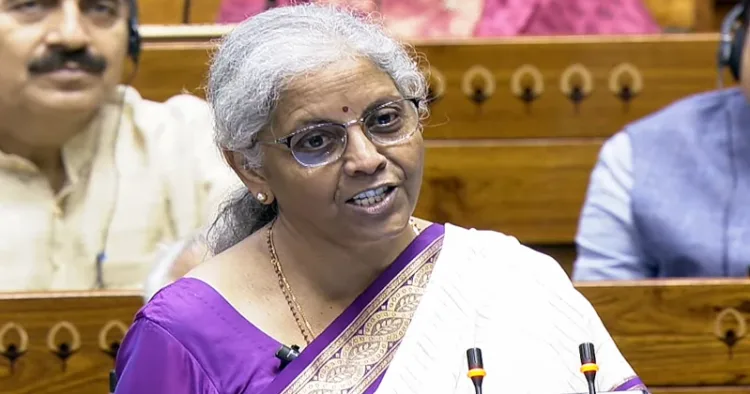In a historic moment, Union Finance Minister Nirmala Sitharaman has made her mark by presenting her seventh consecutive Union Budget on July 23, 2024. This achievement surpasses the previous record held by former Prime Minister Morarji Desai, who presented six consecutive Budgets between 1959 and 1964. FM Sitharaman’s presentation for the fiscal year 2024-25 is a significant event, highlighting her influential role in shaping India’s economic policies during her tenure.
FM Nirmala Sitharaman, who turns 65 next month, became India’s first full-time woman Finance Minister in 2019 when Prime Minister Narendra Modi’s Government secured a decisive second term. Since her appointment, she has presented six consecutive Budgets, including an interim Budget earlier this year in February. This presentation marked her seventh consecutive Budget, setting a new precedent in India’s financial history.
Dual Budgets in 2024
This year, India has seen the rare occurrence of two Budget presentations. An interim Budget was presented in February, adhering to the convention that an incumbent government cannot present a full Budget immediately before general elections. The Budget presentation on July 23 is the first full Budget by the re-elected BJP-led NDA government, laying out the financial roadmap for the nation for the fiscal year 2024-25.
The Union Budget of independent India was first presented on November 26, 1947, by RK Shanmukham Chetty, the nation’s inaugural Finance Minister. Since then, the Budget has evolved significantly, with various finance ministers making notable contributions over the decades.
Records and Notable Contributions
Morarji Desai: Holding the record for the most Budgets presented, Desai delivered ten Budgets during his tenure under Prime Ministers Jawaharlal Nehru and Lal Bahadur Shastri. Desai’s first Budget was on February 28, 1959. He presented full Budgets in the subsequent two years, followed by an interim Budget in 1962, two more full Budgets, another interim Budget in 1967, and three consecutive full Budgets from 1967 to 1969.
P Chidambaram: The former Finance Minister presented nine Budgets, beginning with a Budget on March 19, 1996, during the United Front government led by Prime Minister HD Deve Gowda. He presented another Budget the following year and resumed his role as Finance Minister when the Congress-led UPA came to power in 2004. Chidambaram presented five Budgets from 2004 to 2008 and returned to the Finance Ministry to present Budgets in 2013 and 2014.
Pranab Mukherjee: During his tenure as Finance Minister, Mukherjee presented eight Budgets. He delivered three consecutive Budgets in the early 1980s and five straight Budgets from 2009 to 2012 under the Congress-led UPA government.
Manmohan Singh: The former Prime Minister, who served as Finance Minister in PV Narasimha Rao’s government, presented five consecutive Budgets between 1991 and 1995.
Budget Presentation Traditions
Longest Budget Speech: Nirmala Sitharaman holds the record for the longest Budget speech, which lasted two hours and 40 minutes on February 1, 2020. She had to cut her speech short due to health reasons, leaving two pages unread.
Shortest Budget Speech: Hirubhai Mulljibhai Patel delivered the shortest interim Budget speech in 1977, comprising just 800 words.
Timing and Date Changes: Traditionally, the Budget was presented at 5 pm on the last day of February. This timing was a colonial-era practice ensuring simultaneous announcements in London and India. The timing was changed to 11 am in 1999 by then Finance Minister Yashwant Sinha. In 2017, the presentation date was moved to February 1 to allow for a smoother approval process before the start of the fiscal year on April 1.
FM Sitharaman’s Journey and Impact
Nirmala Sitharaman’s journey as Finance Minister has been marked by significant reforms and initiatives aimed at bolstering India’s economic framework. Her tenure has seen the implementation of measures to enhance the country’s digital economy, streamline taxation processes, and boost various sectors, including agriculture, manufacturing, and services. Her budgets have focused on infrastructure development, social welfare schemes, and measures to attract foreign investment.


















Comments